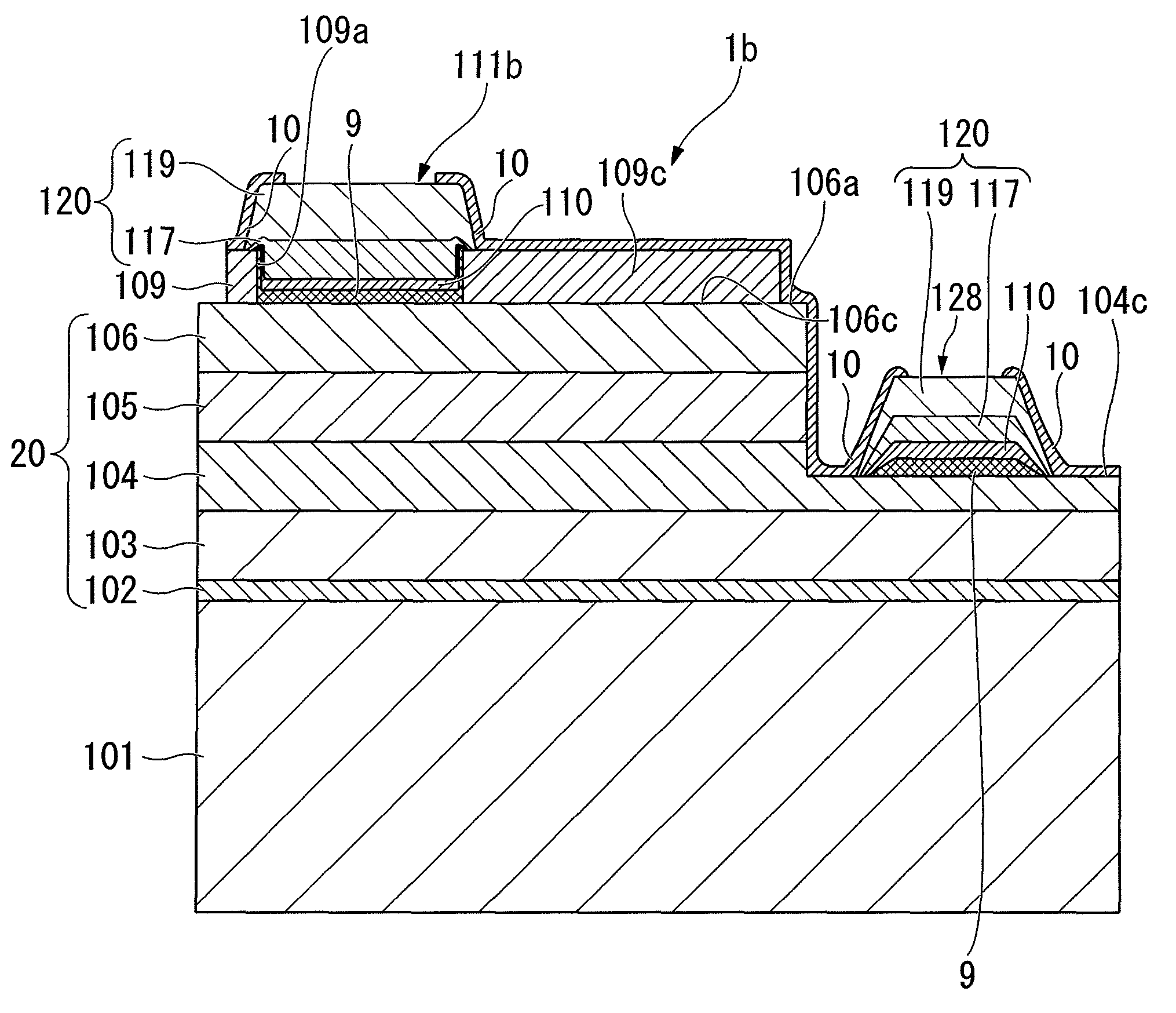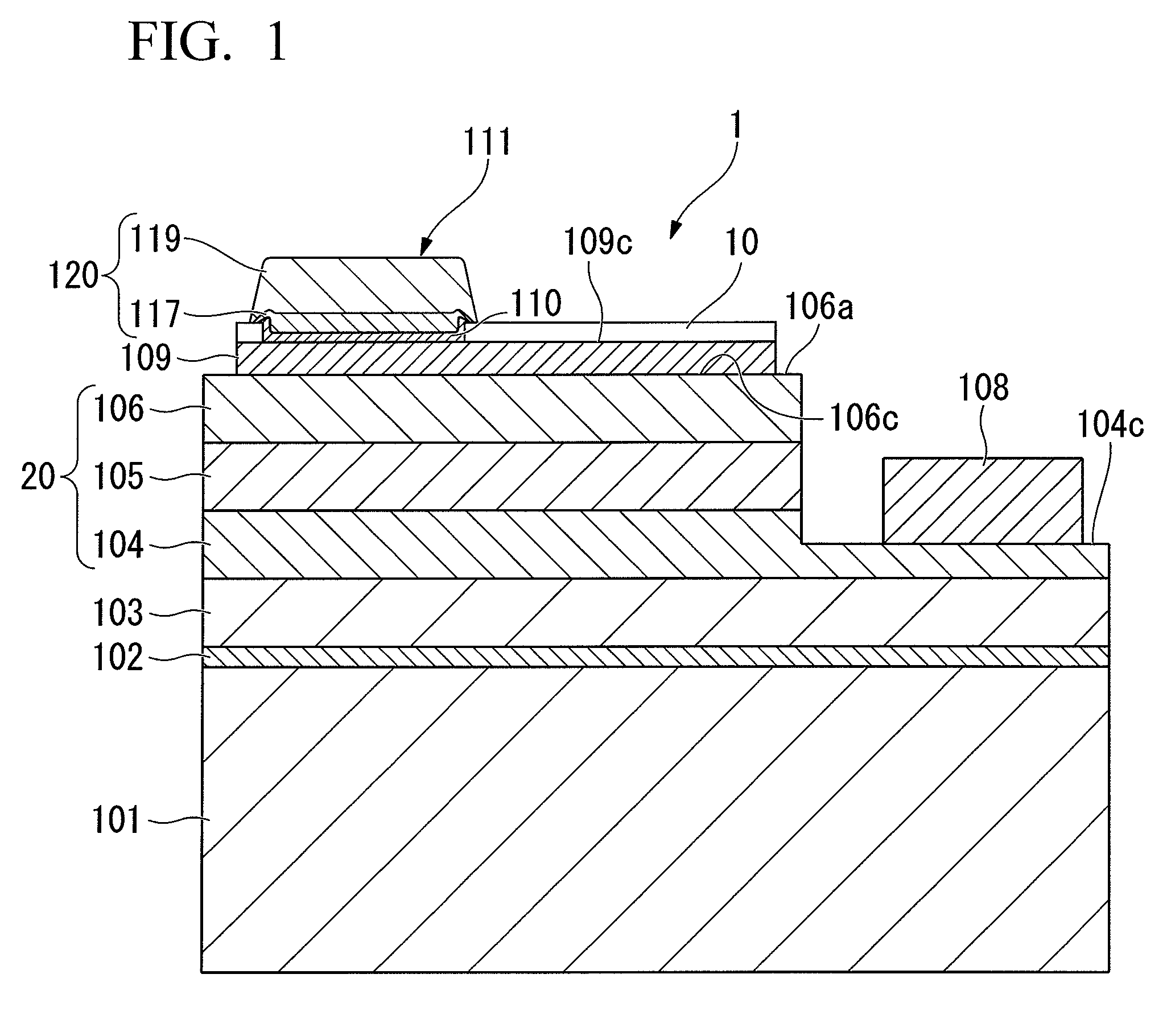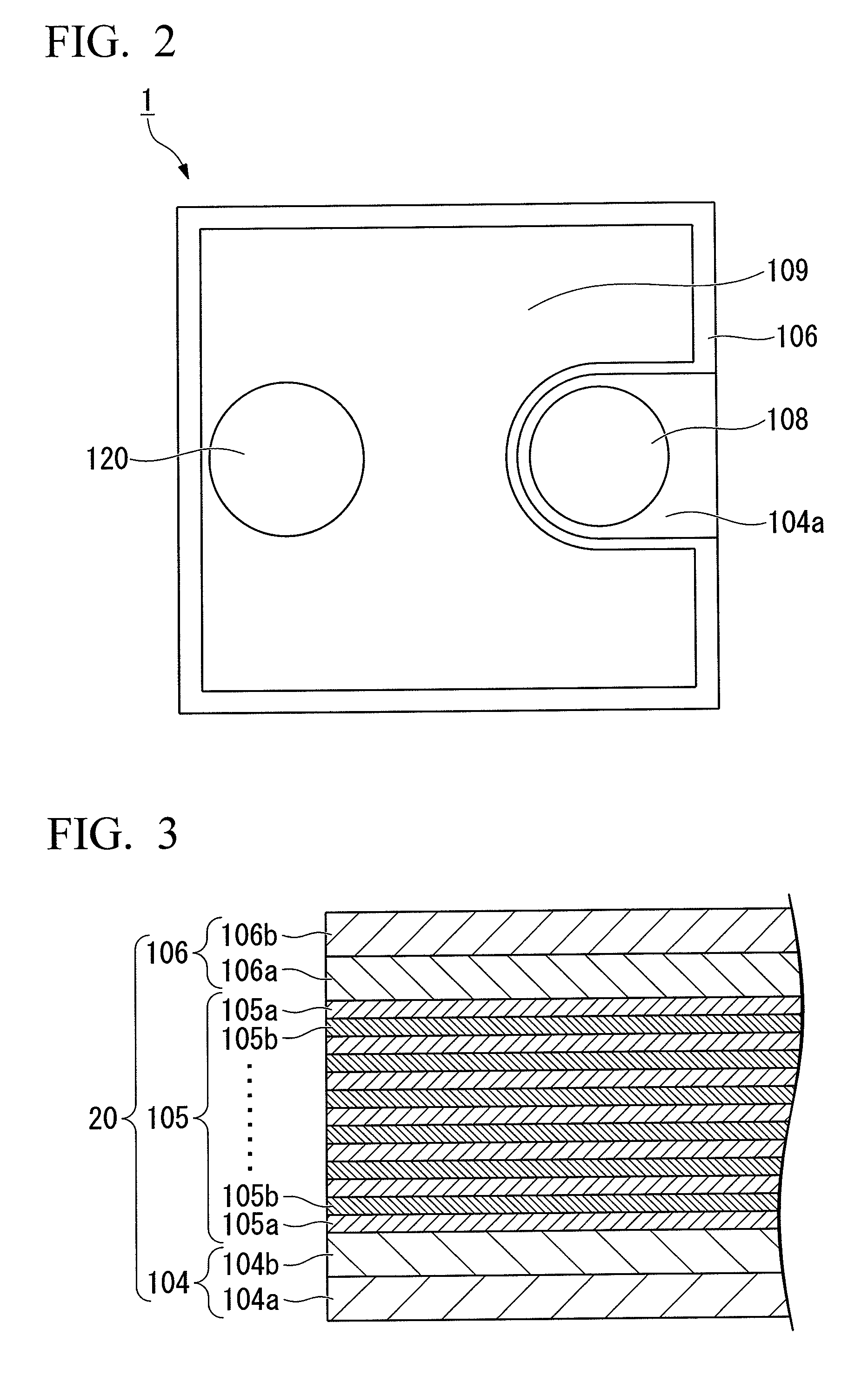Semiconductor light-emitting element, electrode and manufacturing method for the element, and lamp
a technology of semiconductor light-emitting elements and manufacturing methods, which is applied in the manufacturing of semiconductor/solid-state devices, semiconductor devices, electrical equipment, etc., can solve the problems of not being able to extract a portion of the emitted light out of the light-emitting element, the bonding pad electrode is unable to resist the tensile stress, and the electrode itself is difficult to use as a bonding pad electrode, etc., to prevent the light from being peeled off, the junction and anticorrosion properties
- Summary
- Abstract
- Description
- Claims
- Application Information
AI Technical Summary
Benefits of technology
Problems solved by technology
Method used
Image
Examples
embodiment 1
[0116]FIGS. 1 to 4 are views illustrating an example of a semiconductor light-emitting element according to an embodiment of the present invention. FIG. 1 is a schematic cross-sectional view illustrating an example of a semiconductor light-emitting element according to an embodiment of the present invention, and FIG. 2 is a schematic plan view illustrating an example of a semiconductor light-emitting element according to an embodiment of the present invention. FIG. 3 is a schematic cross-sectional view illustrating an example of a laminated semiconductor layer of a semiconductor light-emitting element according to an embodiment of the present invention, and FIG. 4 is an example of an enlarged cross-sectional view of a p-type electrode of a semiconductor light-emitting element according to an embodiment of the present invention.
[0117](Semiconductor Light-Emitting Element)
[0118]As illustrated in FIG. 1, a semiconductor light-emitting element 1 according to an embodiment of the present...
embodiment 7
[0236]FIGS. 14 to 17 are views illustrating an example of a semiconductor light-emitting element according to an embodiment of the present invention. FIG. 14 is a schematic cross-sectional view of a semiconductor light-emitting element according to an embodiment of the present invention, and FIG. 15 is a schematic plan view of a semiconductor light-emitting element according to an embodiment of the present invention. FIG. 16 is a schematic cross-sectional view illustrating a laminated semiconductor of a semiconductor light-emitting element according to an embodiment of the present invention, and FIG. 17 is a schematically enlarged cross-sectional view of a p-type electrode of a semiconductor light-emitting element illustrated in FIG. 14 according to an embodiment of the present invention.
[0237]As illustrated in FIG. 14, a semiconductor light-emitting element 1 according to this embodiment includes a substrate 101, a laminated semiconductor layer 20 formed on the substrate 101, a p-t...
embodiment 12
[0282]FIGS. 26 to 29 are views illustrating an example of a semiconductor light-emitting element according to an embodiment of the present invention. FIG. 26 is a schematic cross-sectional view of the semiconductor light-emitting element, and FIG. 27 is a schematic plan view of a semiconductor light-emitting element illustrated in FIG. 26. FIG. 28 is a schematic enlarged cross-sectional view of a laminated semiconductor layer constituting a semiconductor light-emitting element illustrated in FIG. 26. FIG. 29 is a view illustrating an electrode constituting a semiconductor light-emitting element illustrated in FIG. 26, and FIG. 29(a) is a schematic enlarged cross-sectional view of a p-type electrode, and FIG. 29(b) is a schematic enlarged cross-sectional view of an n-type electrode.
[0283]As illustrated in FIG. 26, a semiconductor light-emitting element 1 according to this embodiment includes a substrate 101, a laminated semiconductor layer 20 formed on the substrate 101, a p-type ele...
PUM
 Login to View More
Login to View More Abstract
Description
Claims
Application Information
 Login to View More
Login to View More - R&D
- Intellectual Property
- Life Sciences
- Materials
- Tech Scout
- Unparalleled Data Quality
- Higher Quality Content
- 60% Fewer Hallucinations
Browse by: Latest US Patents, China's latest patents, Technical Efficacy Thesaurus, Application Domain, Technology Topic, Popular Technical Reports.
© 2025 PatSnap. All rights reserved.Legal|Privacy policy|Modern Slavery Act Transparency Statement|Sitemap|About US| Contact US: help@patsnap.com



